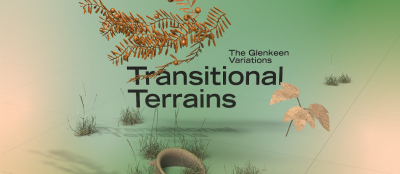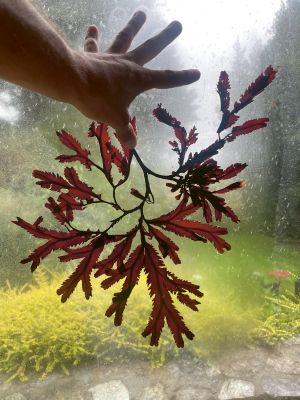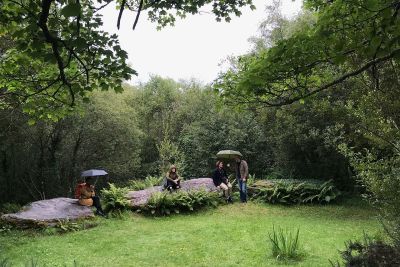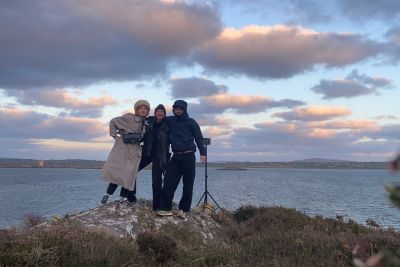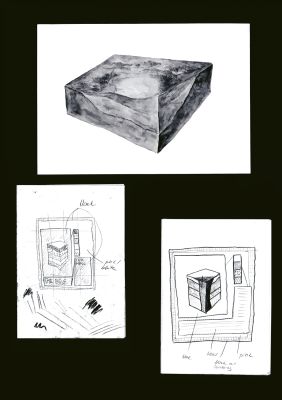Between the deep time of the bog and the ceaseless breathing of the coastline, ‘Transitional Terrains’ unfolds as an exploration of sites shaped by their spatio-temporal rhythms. In the moorland, time pools—centuries of sediment, memories and myth, half-swallowed by peat, resistant to decay. By contrast, the littoral zone of Roaringwater Bay constantly reshapes itself, the tide drawing and erasing an in-flux border that never resolves into permanence. At a time when dominant narratives erase the nuances of marginal spaces, ‘Transitional Terrains’ foregrounds storytelling as a form of quiet re-enchantment. To trace the contours of a bog or a coastline is to acknowledge that all terrains—material and psychic—are shaped by the stories that are cradled along or within them.
For Max Brück, Yulia Carolin Kothe, and Katerina Sidorova, the bog is both repository and collaborator—a place where organic and cultural residues layer over centuries. This work marks the return of gathered elements: bog sounds, recorded voices, clay vessels, and organic fragments to the Irish landscape where they were first encountered. Initially carried away through a collaborative artistic process, these materials now return, not as extracted resources, but as story-holders. Inspired by Ursula K. Le Guin’s ‘Carrier Bag Theory of Fiction’, the project frames the bog not as a passive setting but as a generative container: a vessel of memory, sensual knowledge, and relation. The visitors are invited to dwell in this temporary landscape that consists of an uncanny merge of made objects, packaging materials, recorded sounds, memories that linger and the soft ground.
The collaborative practice of Lorenzo Rebediani, Vera Scaccabarozzi, Luca Trevisani, and Francesca Verga draws on the fragile in-betweenness of the coast—a liminal zone that oscillates between salty submergence and windy exposure. ‘Abécédaire of Fringes’, an installation and book sharing the same title, both arose from their shared curiosity for this edge-world, embracing the provisional nature of these intertidal stories. This ecotone in Roaringwater Bay is marked by a carpet of varied algae and the odd, which became the focal point of their work. The artists collected, dried, photographed, and printed the seaweed onto large fabric pieces. The algae, along with other ecotone dwellers, are flattened like specimens in a herbarium, in an ironic and counter-intuitive gesture that challenges Western scientific paradigms. Seaweed is also central to the ‘Abécédaire of Fringes’ book, being a recurring presence in the narrative. By embodying the intricate web of connections that define the fringes, this cryptogamic organism inspires ‘Abécédaire of Fringes’ as an experiment in liminal material writing—a process of collectively tracing, rather than analysing, the unexpected interrelations of elements that inhabit the margins.
